Although our movements are still restricted, spring is in the air and – as soon as the corona-measures allow it – it might be a good idea to make some nice hikes through the mountains behind the Montenegrin Coast. It is not easy to stay positive in these difficult times, but being conscious of our country’s beauty and enjoying its culture and untouched nature will certainly help us to overcome our depressions and bad mood….
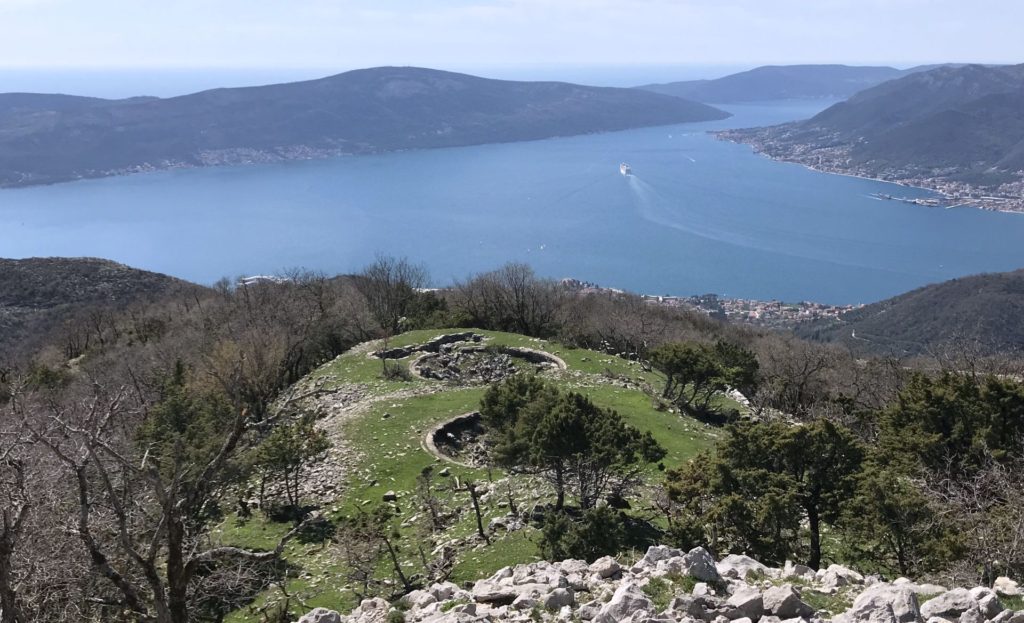 A few years ago I suggested 5 hiking tours along the coast, but now I would like to add some hikes, which can also be combined with other tours. These 7 hikes are meant for those who want to make a day trip and enjoy breathtaking panoramas from the coastal mountains.
A few years ago I suggested 5 hiking tours along the coast, but now I would like to add some hikes, which can also be combined with other tours. These 7 hikes are meant for those who want to make a day trip and enjoy breathtaking panoramas from the coastal mountains.
Vrmac is a long limestone ridge, separating the inner and outer parts of Boka. An old military road, built by the Austro-Hungarians, stretches all the way from the Vrmac Fortress to the 735 m high summit of Sveti Ilija (St. Eliah) – the total distance is 5.5 km in one direction. I assure you that this is one of the most scenic hiking tours on the Montenegrin Coast! It is suitable for all ages and fitness levels. No need to say that this walk is perfect for a family tour.
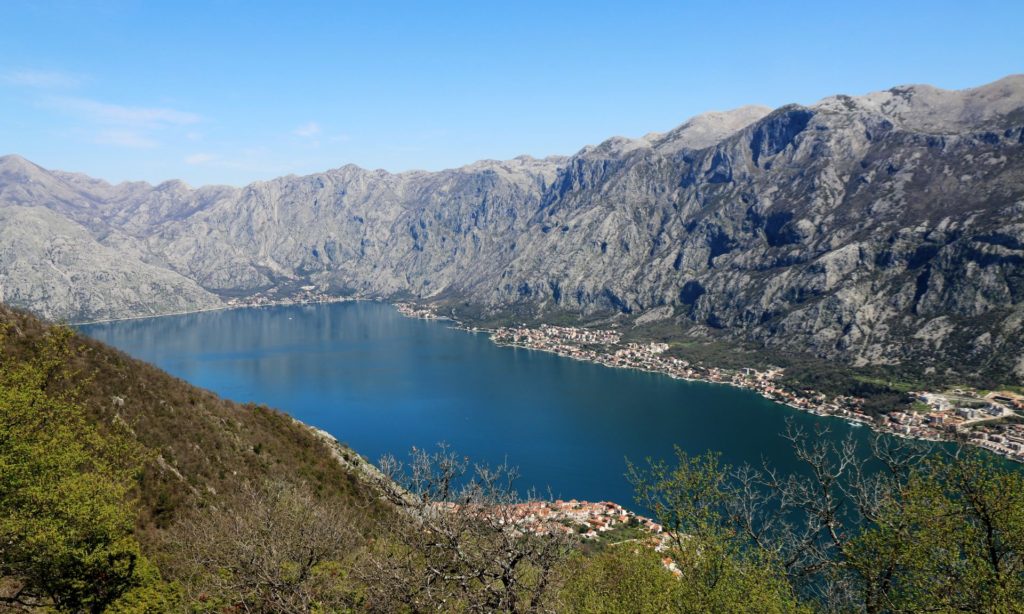 From the Trojica pass on the old road Tivat-Kotor, turn left behind Fort Trojica (coming from Tivat) and take the narrow road uphill. After 3.5 km you will reach the Vrmac fortress, where you can park your car.
From the Trojica pass on the old road Tivat-Kotor, turn left behind Fort Trojica (coming from Tivat) and take the narrow road uphill. After 3.5 km you will reach the Vrmac fortress, where you can park your car.
Take the path through the shady pine forests. You will gradually ascend to a more exposed area with great vistas of the inner Bay of Kotor. Follow the old military road along the crest of the ridge. After 4 km, you will arrive at a junction. Turn right to the summit of Vrmac, Sveti Ilija, where you will see the remains of an observation bunker with incredible vistas of the surroundings. The grassy plateau on the top of Sveti Ilija is a perfect place for a break and a picnic.
You can take the same way back, but there is also an alternative route: at the junction not far from the summit (follow the signposts), you can take the trail down to the Tivat side of the Bay and visit the traditional village of Gornja Lastva (300 m above sea level) with its interesting architecture. But in this case you should take into account that you will need to get a taxi cab to pick you up in Gornja Lastva.
This easy tour starts from Donja Lastva – not far from Tivat -, where you can park your car. The narrow asphalt road leads you uphill to Gornja Lastva, which takes about one hour.
Due to its authentic architecture, this village on the slopes of Mount Vrmac (300 m above sea level) has an exceptional environmental value. It has about 20 stone houses and is surrounded by olive groves. Although many of the houses and stone walls were destroyed in time, the authenticity of the traditional method of building and overall environment was not disturbed. From the terrace in front of St. Mary’s church (14th century) you will have a magnificent view of the Bay of Tivat and Porto Montenegro.
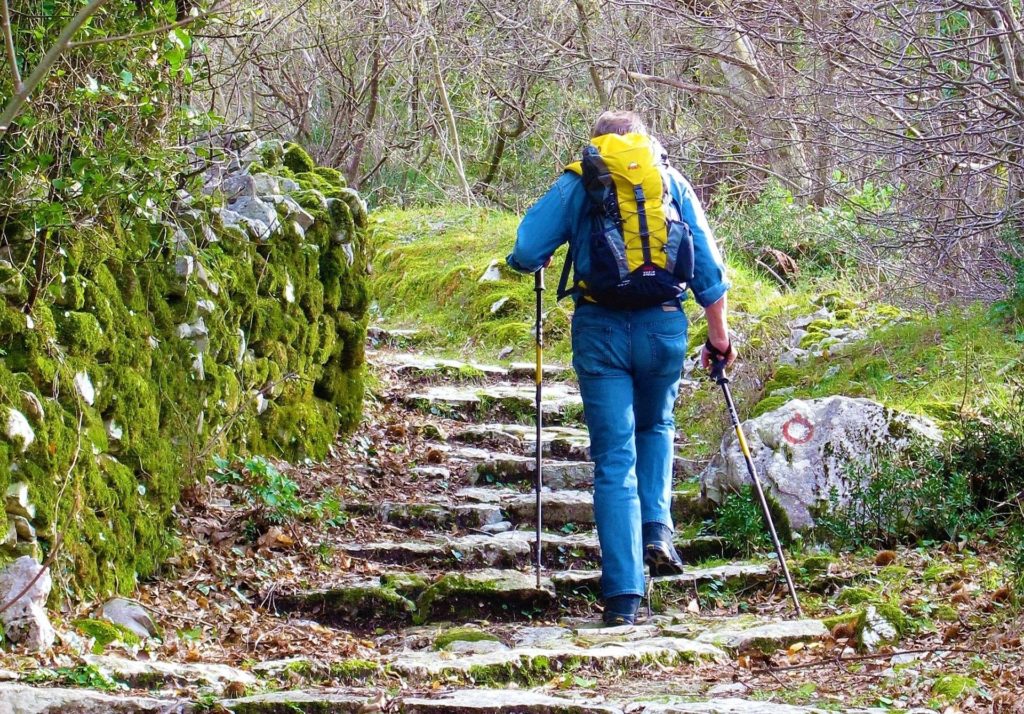 At the beginning of the village is a square with a war monument, where signposts show the way to further hiking trails. From here, you can continue to the mountain saddle of Vrdola (one hour) and further on to the Vrmac fortress (3.30 hours from Gornja Lastva), walking along old Austrian military roads and enjoying untouched nature.
At the beginning of the village is a square with a war monument, where signposts show the way to further hiking trails. From here, you can continue to the mountain saddle of Vrdola (one hour) and further on to the Vrmac fortress (3.30 hours from Gornja Lastva), walking along old Austrian military roads and enjoying untouched nature.
Driving from Tivat along the Bay, in the direction of Prčanj and Kotor, you will soon arrive in the picturesque village of Stoliv, a small fisherman’s settlement from the 14th century that remained preserved over the centuries.
From here you can make a 45 minute walk to Gornji Stoliv, located on the slopes of Mount Velji Vrh. Park your car near the post office and you will find a narrow path that leads uphill, starting between the post office and milestone 38.
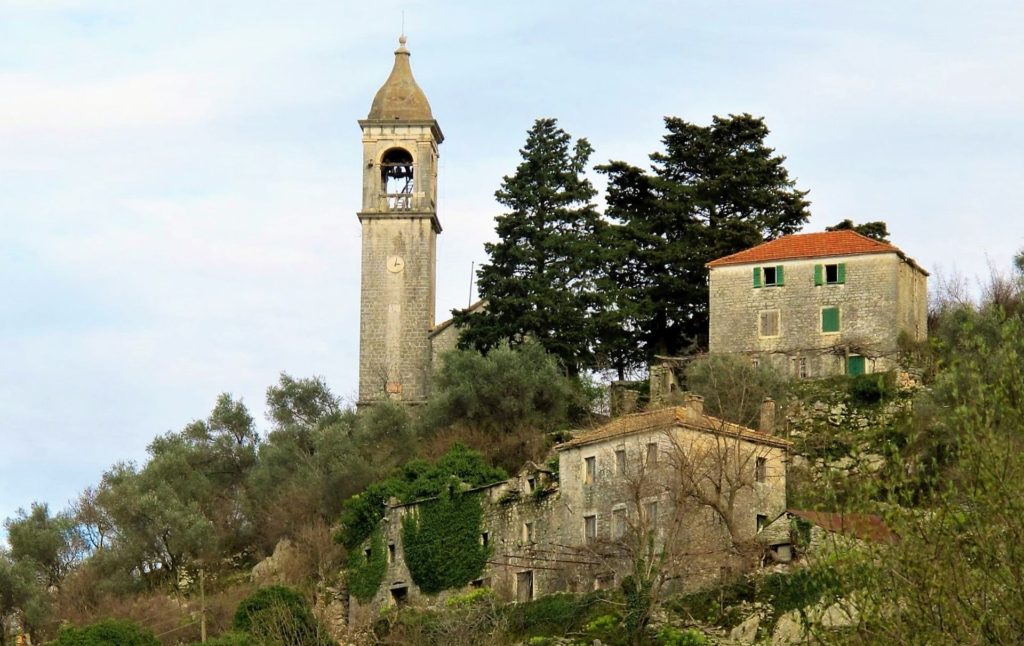 From the graveyard, you will continue by an old pebble road that takes you zigzag up to this peaceful hamlet through chestnut woods and olive groves. Many houses are abandoned, but the village has succeeded in keeping its original form and authenticity.
From the graveyard, you will continue by an old pebble road that takes you zigzag up to this peaceful hamlet through chestnut woods and olive groves. Many houses are abandoned, but the village has succeeded in keeping its original form and authenticity.
On the top of the hill (260 m above sea level) is the St. Elijah’s Church, from where you have a breathtaking view over the entire Boka. You can take the same road back, but if you have time enough, you can also continue the hiking tour to the mountain saddle of Kalvaria (540 m) and then through Vrdola back to the coast, downhill to the village of Prčanj. The complete hiking tour takes 3.5 – 4 hours.
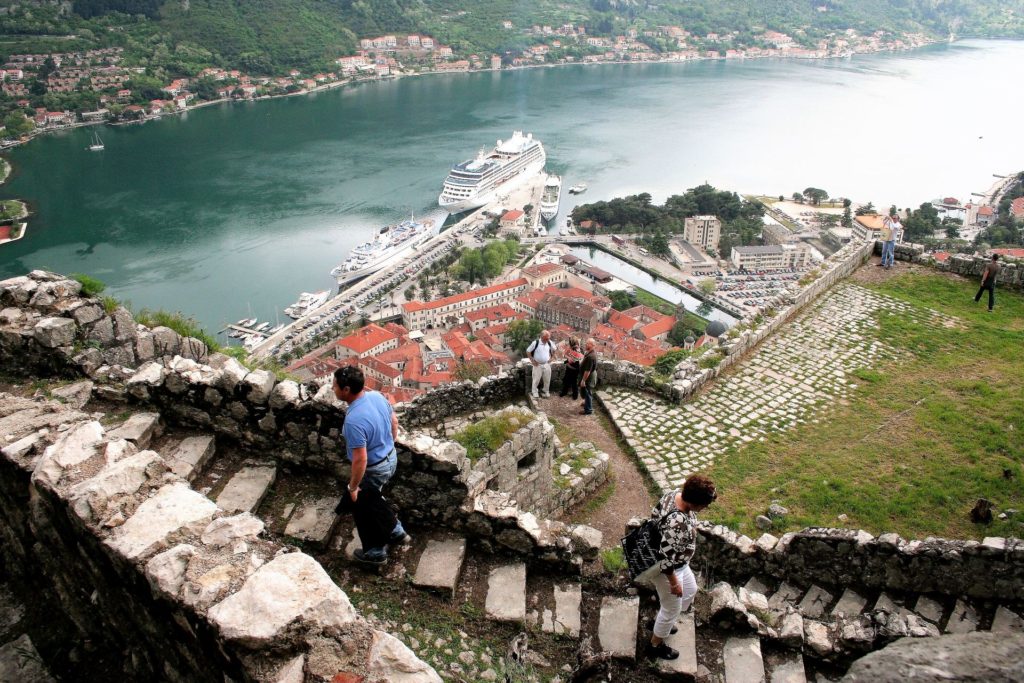 Climbing the 4.5 km long city walls of Kotor up to the St. John’s fortress is a perfect hike, especially on a sunny day in the off-season months. Start the hike in the old town. Enter the archway near the North Gate and follow the narrow street upwards.
Climbing the 4.5 km long city walls of Kotor up to the St. John’s fortress is a perfect hike, especially on a sunny day in the off-season months. Start the hike in the old town. Enter the archway near the North Gate and follow the narrow street upwards.
Honestly speaking, this is not an easy walk: for the steep and rocky climb along the city walls to the fortress of St. John (San Giovanni) you have to count 1355 steps; its altitude above sea level is around 260 meters. The complete hike in both directions takes around two hours: at first 20 minutes to the Church of Our Lady of Remedy, at an altitude of 100 m, and another 40 minutes to reach the top. The higher you climb, the more fascinating become the views of the blue Bay and the tiny red roofs of the old town below.
 By the way: if you don’t want to walk the same way back, you can return by climbing through a window in the walls of the fortress (see photo). This hole leads to a small valley, from where you can follow a marked (red and white) trail that leads over grassy terraces and via a series of switchbacks down along the outer side of the city walls on the northern side of the moat. This trail is part of the so-called “Ladder of Kotor”, the centuries-old trail between Kotor and Old Montenegro. Once upon a time, Montenegrin women used this path to go to the Kotor market, carrying heavy burdens.
By the way: if you don’t want to walk the same way back, you can return by climbing through a window in the walls of the fortress (see photo). This hole leads to a small valley, from where you can follow a marked (red and white) trail that leads over grassy terraces and via a series of switchbacks down along the outer side of the city walls on the northern side of the moat. This trail is part of the so-called “Ladder of Kotor”, the centuries-old trail between Kotor and Old Montenegro. Once upon a time, Montenegrin women used this path to go to the Kotor market, carrying heavy burdens.
One of the most popular hiking tours on the Montenegrin Coast is the so-called Ladder of Kotor, also called Ladder of Cattaro. It is a descent (or ascent for the more vigorous hikers!) from the 940 meters high Krstac pass to Kotor, following an old horse trail with more than 70 U-turns and magnificent views of the whole Bay.
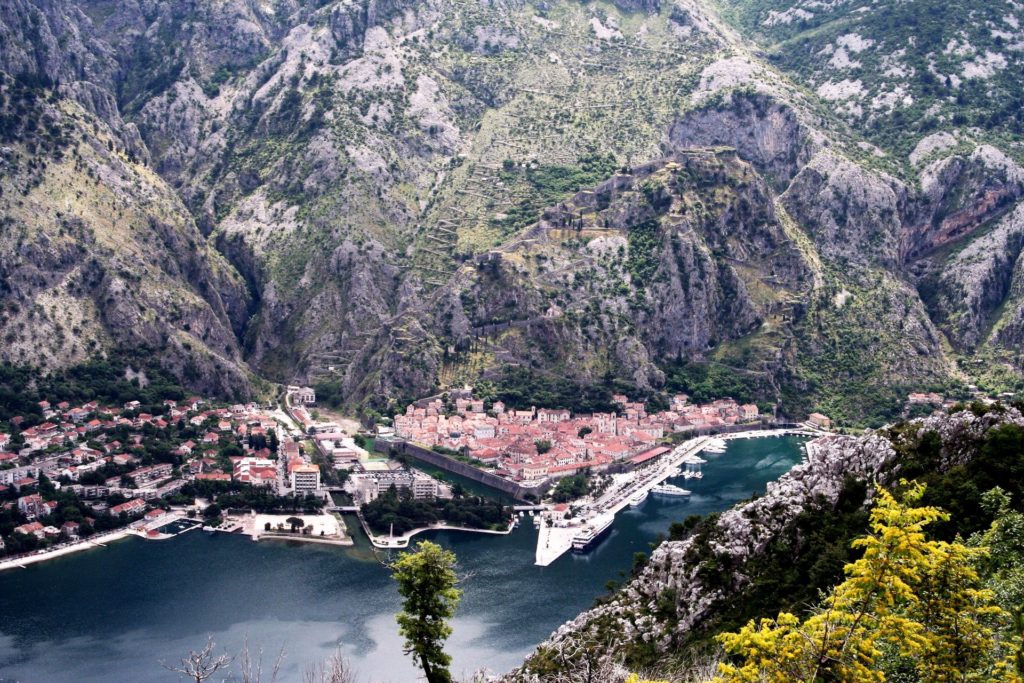 The Austrians built this trail as a military road up to the frontier with Montenegro. The road also served as a supply line for essential provisions. The “Montenegrin market” was held outside the eastern gate of Kotor and that was the place where Montenegrin women sold their own products and bought olive oil, salt, petrol and clothes for their own needs.
The Austrians built this trail as a military road up to the frontier with Montenegro. The road also served as a supply line for essential provisions. The “Montenegrin market” was held outside the eastern gate of Kotor and that was the place where Montenegrin women sold their own products and bought olive oil, salt, petrol and clothes for their own needs.
If you want to take the easy way and make the descent from Krstac to Kotor, you will need around 3-3.5 hours, including photo stops. Park your car in Kotor and take a taxi cab to Krstac, following the “new Ladder”, a narrow asphalt road with 26 serpentines, until the place where the trail starts.
The trail – no. 759 – starts at an altitude of 940 m and runs downhill from the asphalt road. You will pass an endless series of U-turns, at first through the forest. But when you get out in the open, you will enjoy stunning vistas.
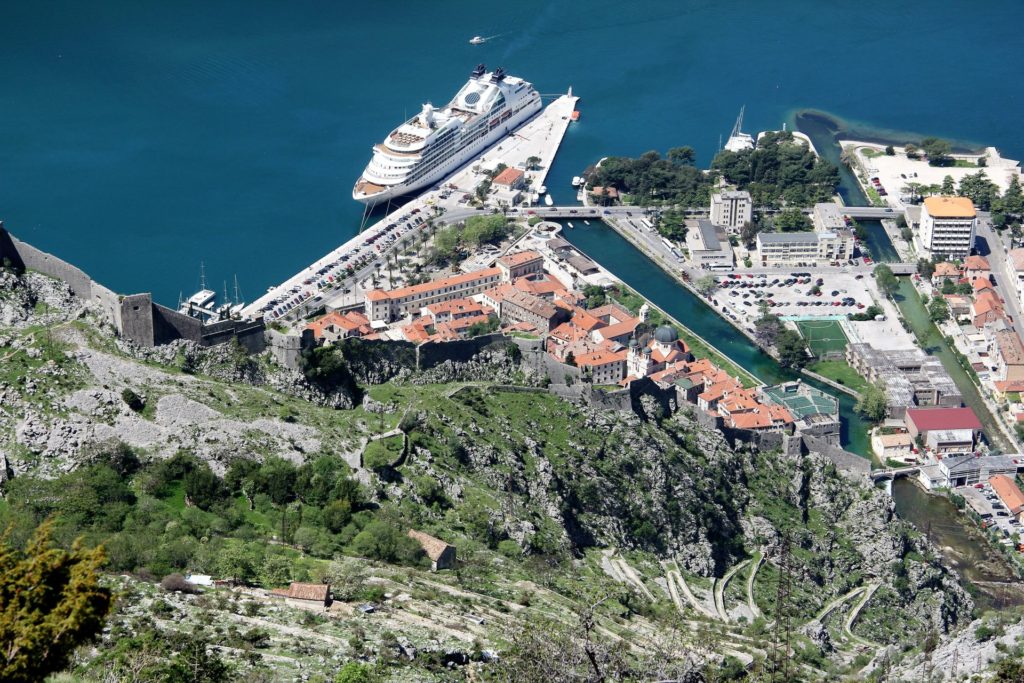 Finally, you will reach the almost deserted village of Špiljari. Make a short detour to the old (dilapidated) church that can be seen in a clearing on the left side, the St. George’s church.
Finally, you will reach the almost deserted village of Špiljari. Make a short detour to the old (dilapidated) church that can be seen in a clearing on the left side, the St. George’s church.
From here, you can walk back to Špiljari and continue zig-zagging downhill or climb through a – well-marked – hole/window in the wall of the St. John’s fortress and then follow the stairways downhill along the city walls, which would be 30 minutes shorter. If you take the old military road, you will reach, after an endless series of switchbacks, an old water power plant. Continue along the Škurda river and then cross the old stone bridge.
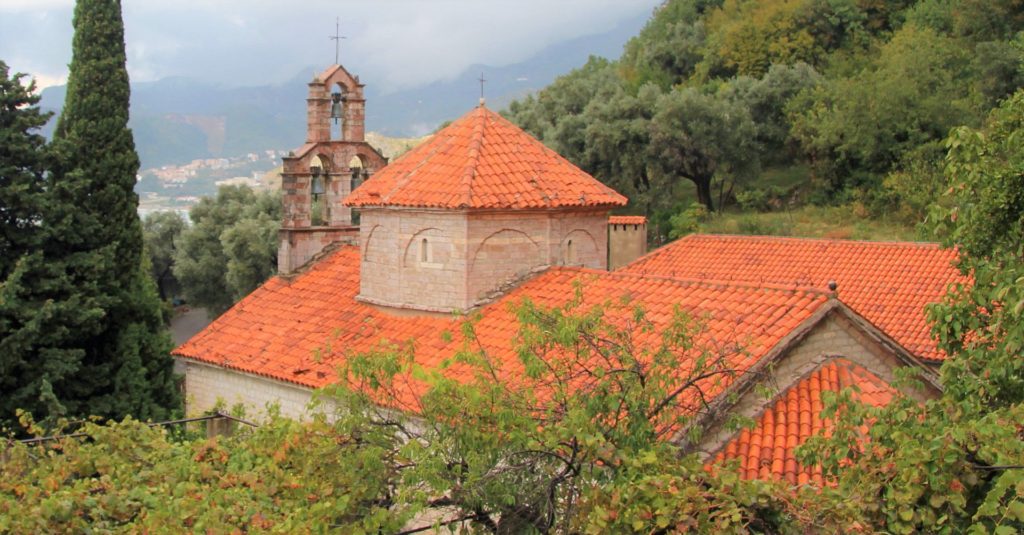 This hiking tour through the coastal mountains of Paštrovačka Gora offers great views on the Budva Riviera. Start from the Praskvica monastery that is situated at a few minutes’ drive from Sveti Stefan.
This hiking tour through the coastal mountains of Paštrovačka Gora offers great views on the Budva Riviera. Start from the Praskvica monastery that is situated at a few minutes’ drive from Sveti Stefan.
You can park your car in front of the monks’ residence (don’t miss the St. Nicolas Church with it large golden iconostasis), pass the cemetery above the monastery and take the narrow trail that leads you to the beginning of ‘Jegorov put’.
The path is not only a popular hiking trail for tourists, but also for pilgrims, in particular Russians, who are moved by the story of their one-handed countryman, monk Jegor Stroganow. Stroganow built this path ‘from the sea to the sky’ in the beginning of the 19th century, stone by stone, which took him 10 years.
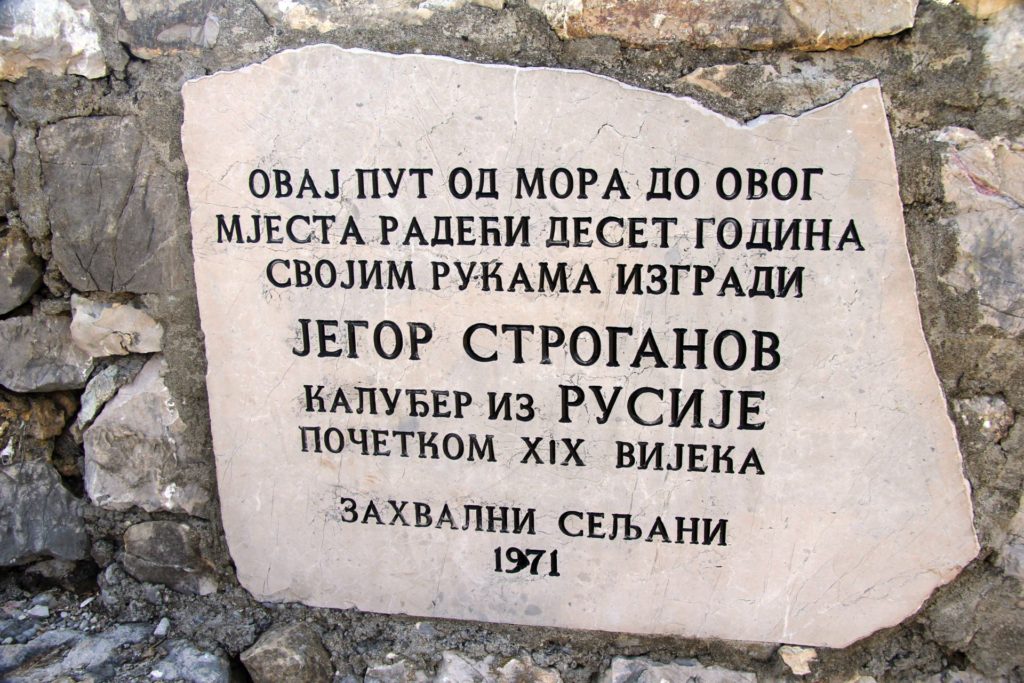 At the top of the path (30 minutes) there is a memorial plaque placed by the inhabitants of this area. Take a break at the panorama terrace and enjoy the spectacular view of Sveti Stefan and surroundings before you walk back to the monastery. But if you continue uphill through the forest and the abandoned village of Kruti, you can turn left, visit the beautiful Rustovo monastery with its wooden Russian chapel and then descend to the coast.
At the top of the path (30 minutes) there is a memorial plaque placed by the inhabitants of this area. Take a break at the panorama terrace and enjoy the spectacular view of Sveti Stefan and surroundings before you walk back to the monastery. But if you continue uphill through the forest and the abandoned village of Kruti, you can turn left, visit the beautiful Rustovo monastery with its wooden Russian chapel and then descend to the coast.
Before you reach Sutomore on the Adriatic Highway, you will see a big ruined fortress on the right side, on the top of a high rock (230 m).
How to get there? Before you enter Sutomore, turn right and follow the road to Zagrađe until you reach the Fleur of Orange Hotel. Unless you have a 4×4, park your car there.
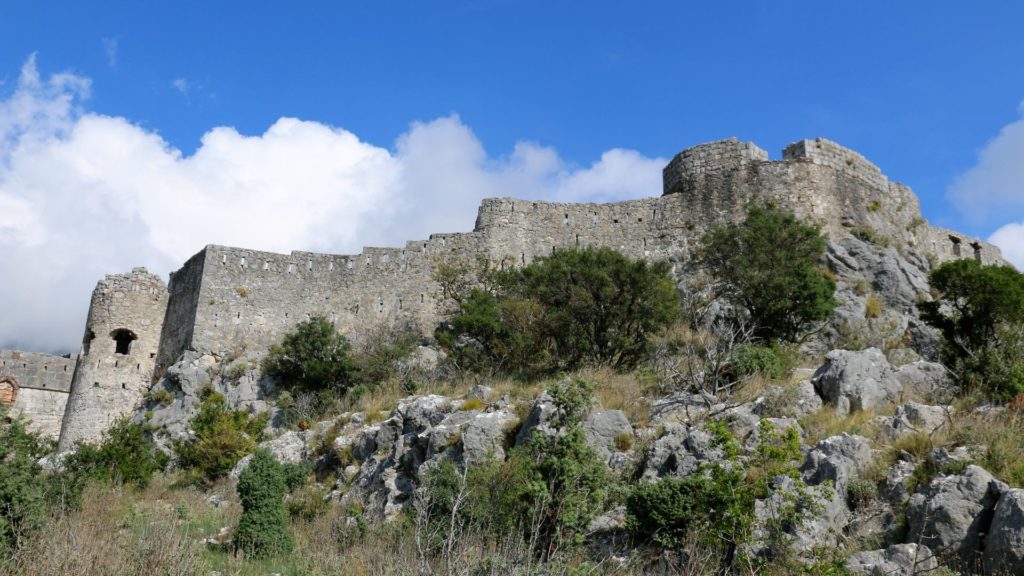 There is a signpost to Haj Nehaj on the right side of the road. Walk uphill along the steep car trail. Before the trail ends (and immediately after a steep concrete road section that is clearly ribbed to avoid slipping), there is a narrow path that leads to the right, towards the hill where the fortress is located. The red-and-white marks along the path are faded, but if you take care, you can’t miss it. The climb will take you about one hour.
There is a signpost to Haj Nehaj on the right side of the road. Walk uphill along the steep car trail. Before the trail ends (and immediately after a steep concrete road section that is clearly ribbed to avoid slipping), there is a narrow path that leads to the right, towards the hill where the fortress is located. The red-and-white marks along the path are faded, but if you take care, you can’t miss it. The climb will take you about one hour.
Haj Nehaj was built by the Venetians and extended by the Turks. In case of an attack, it could accept 900 people. The fort had a well or better said a container room that holds water even today, an armory and also a church. Its ruins can be seen on the top of the fortress. Different sources note that it once had two altars, orthodox and catholic, although you can now only see the remains of the orthodox altar.
If you would like to get some more detailed information about these hiking tours, read my individual blog posts about these tours. Have a nice time!
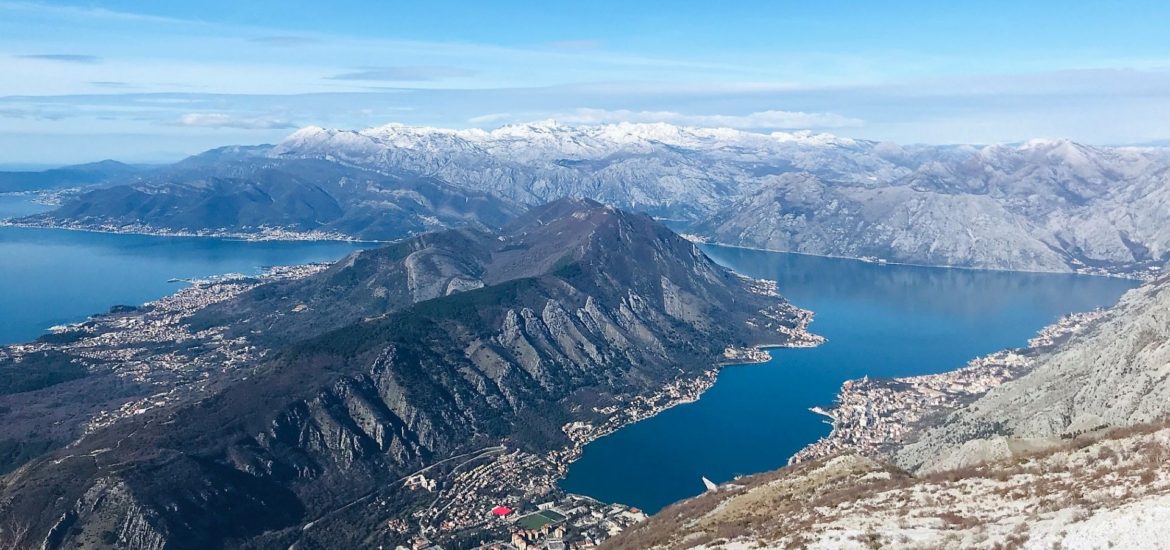

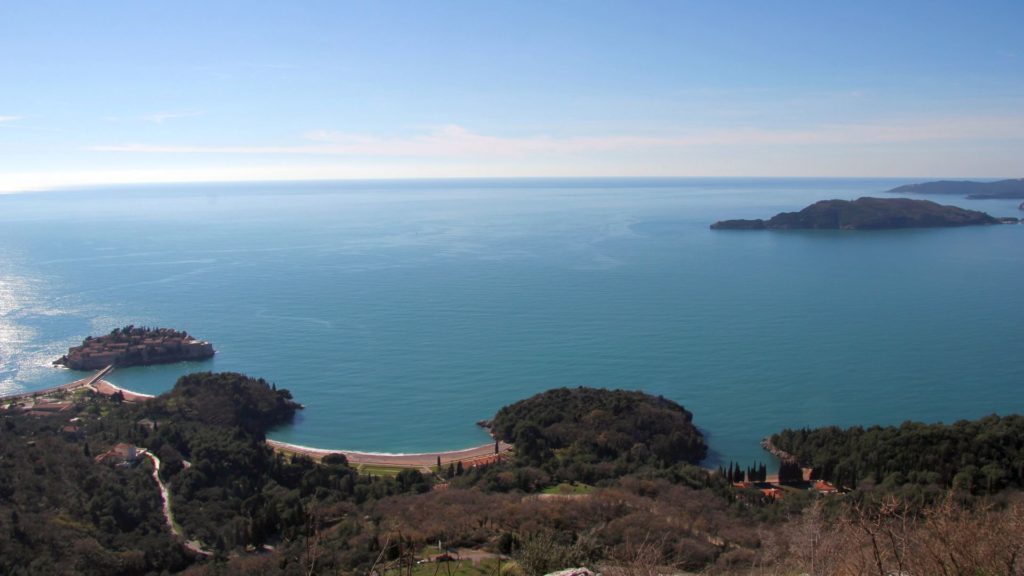
Hallo Marianne, ich habe gesehen, dass du ein Buch von Touren in Montenegro veröffentlicht hast. Kann man das kaufen, und wenn ja wo? Meine Frau und ich möchten in 3 Wochen eine Radtour mit dem E-MTB im Hinterland machen. Ich möchte dabei so viel wie möglich Informationen im Vorfeld bekommen. Viele Grüße Siegfried